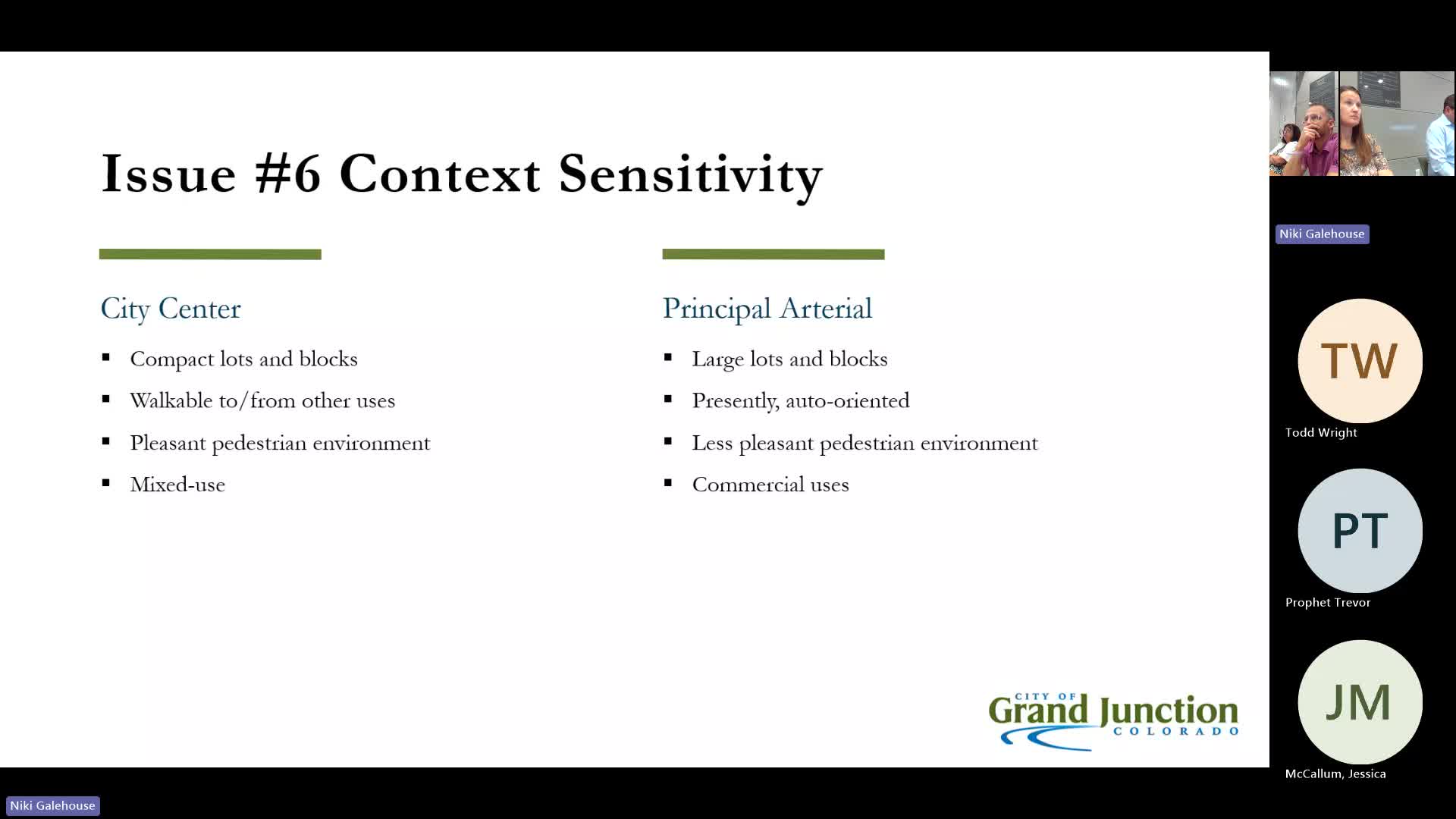City debates future of walkable versus auto-oriented development
September 05, 2024 | Grand Junction, Mesa County, Colorado
This article was created by AI summarizing key points discussed. AI makes mistakes, so for full details and context, please refer to the video of the full meeting. Please report any errors so we can fix them. Report an error »

During a recent government meeting, officials discussed the need for context-sensitive design standards across different areas of the city, particularly highlighting the contrast between the walkable city center and auto-oriented locations along principal arterial roads. The conversation emphasized the importance of aligning development strategies with citywide goals, particularly in terms of enhancing walkability and economic development.
One key point raised was the financial implications of prioritizing pedestrian-friendly designs over traditional auto-oriented developments. It was noted that while optimizing sites for drive-thrus and vehicle traffic may appear cost-effective, pedestrian-oriented developments can also be economically productive. This raises questions about the most lucrative design approaches for the future, especially considering the potential costs associated with retrofitting existing sites.
The meeting also referenced the comprehensive plan's principles, which advocate for a resilient economy and responsible growth. These principles call for the establishment of walkable neighborhoods and context-sensitive development, which are supported by new zoning and development codes. Officials stressed the importance of ensuring that design standards align with citywide goals and do not create barriers for new businesses.
In light of these discussions, staff presented four potential courses of action regarding the current development provisions, with the first option being to maintain the status quo without any changes. The meeting underscored the need for a balanced approach that promotes both economic prosperity and effective urban design, aiming for development that is beneficial both now and in the future.
One key point raised was the financial implications of prioritizing pedestrian-friendly designs over traditional auto-oriented developments. It was noted that while optimizing sites for drive-thrus and vehicle traffic may appear cost-effective, pedestrian-oriented developments can also be economically productive. This raises questions about the most lucrative design approaches for the future, especially considering the potential costs associated with retrofitting existing sites.
The meeting also referenced the comprehensive plan's principles, which advocate for a resilient economy and responsible growth. These principles call for the establishment of walkable neighborhoods and context-sensitive development, which are supported by new zoning and development codes. Officials stressed the importance of ensuring that design standards align with citywide goals and do not create barriers for new businesses.
In light of these discussions, staff presented four potential courses of action regarding the current development provisions, with the first option being to maintain the status quo without any changes. The meeting underscored the need for a balanced approach that promotes both economic prosperity and effective urban design, aiming for development that is beneficial both now and in the future.
View full meeting
This article is based on a recent meeting—watch the full video and explore the complete transcript for deeper insights into the discussion.
View full meeting
